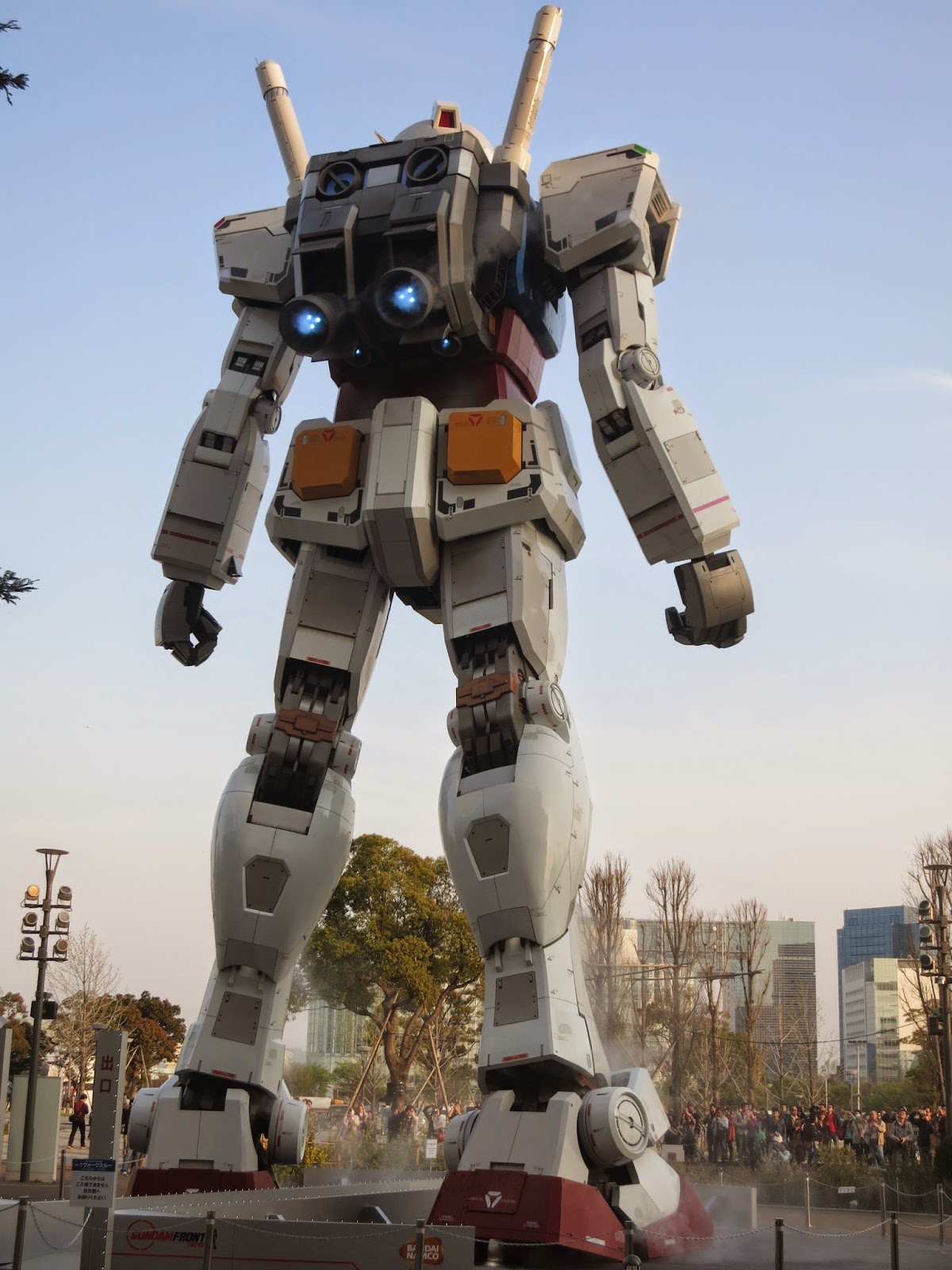On the right side of the photo below is the Asahi Beer Headquarters (golden building).
That golden thing which looks like a chili pepper to me is called the Asahi flame designed by Philippe Starck. Our tour guide said it represents the frothy foam of beer.
We also went to the Diver City which is a shopping mall. But nope, we didn't go there to shop but...
to see the Gundam robot. Haha... How tall is it? It's 60 ft tall. For some perspective, check out the spectators at the foot of the robot.
Here's the front view of the Gundam robot. We were able to catch the robot exhibition where the robot moves (complete with sound effects and music).
But I am more of a Voltes V and Daimos kid. I couldn't remember watching the Gundam series. Or maybe I am having memory lapses already. Haha...
Walking distance from the Diver City is a replica of the Statue of Liberty with its back on the bay. Our tour guide kidded us that it's because people love to take photo ops in Japan. Haha...
Behind the Statue of Liberty replica is the Rainbow bridge. If you can see the buildings behind the bridge, that's central Tokyo. Diver City (where Gundam is) and the replica of the Statue of Liberty are located in a place called Odaiba which is an artificial island in Tokyo (or what we call a reclaimed area).
We had dinner at Odaiba and here's the view of the statue and Rainbow Bridge from the restaurant in the evening.
During our free day in Tokyo, other than visiting the Meiji Shrine, we also went around Ginza.
In Ginza are upscale department stores - which means a place where I can't afford anything. Haha...
Since we were a bit early when we got there and most department stores were still closed, we stayed first at the Starbucks branch across Mitsukoshi. That Starbucks branch happens to be the first Starbucks in Japan.
I don't usually buy souvenir Starbucks mugs because they are too bulky to bring home but for the first time, I decided to get one - the only thing I could afford in the Ginza area. Haha...
We also got 1-day train passes to save on transpo costs and when we got off the Shibuya station, this is what greeted us - Hachiko!
I have never watched the movie because I think it's too sad for me, but years before the movie, I have already read Hachiko's story. If you don't know the story, here's the gist: A Japanese professor took Hachiko as his pet in 1924. Since then, Hachiko would go to the Shibuya station at the end of the day to wait and greet the professor. This was their daily routine until one day in 1925, the Professor suffered hemorrhage and died. But every single day in the next 9 years, Hachiko still came to the train station to wait for the professor. Hachiko died in 1935 but after almost 80 years, Hachiko's memory still lives on.
This is the Shibuya crossing which is a popular location for films and shows such as "Lost in Translation" and "The Fast and the Furious: Tokyo Drift."
Here's another view of the Shibuya crossing. During rush hour, they say that there are about 500 people crossing every time the pedestrian light goes green. Wow.
At the second floor of Tsutaya (that big building in the crossing) is a Starbucks - a popular place to watch the Tokyo scene. All the seats by the window face the crossing. They say this Starbucks is a consistent contender for the busiest Starbucks branch in the world.
We also went around Harajuku and Ometosando while in the city. They are also shopping districts.
And this is Tokyo by night.
At past 9pm, a lot of lights in office buildings are still on. Some of the windows I saw are not tinted and since we passed by flyovers, through the windows, you could clearly see employees still working on their computers.
They say the Japanese are extremely hardworking. On our flight to Osaka, I was seated beside a Filipina who works for a school in Osaka. She shared with me that her Japanese colleagues (and the Japanese in general) would report for work even if they are sick because they don't want to put the burden of their work deliverables to their co-employees. :)

















